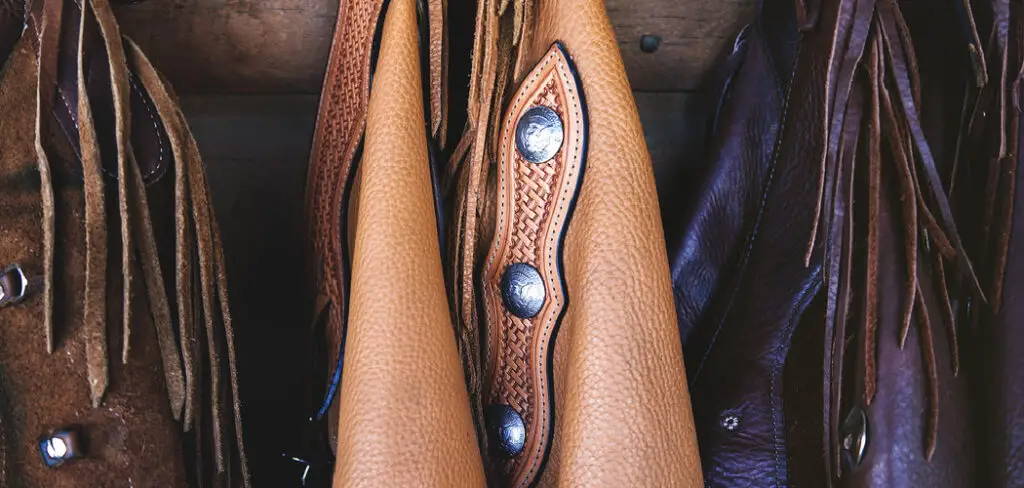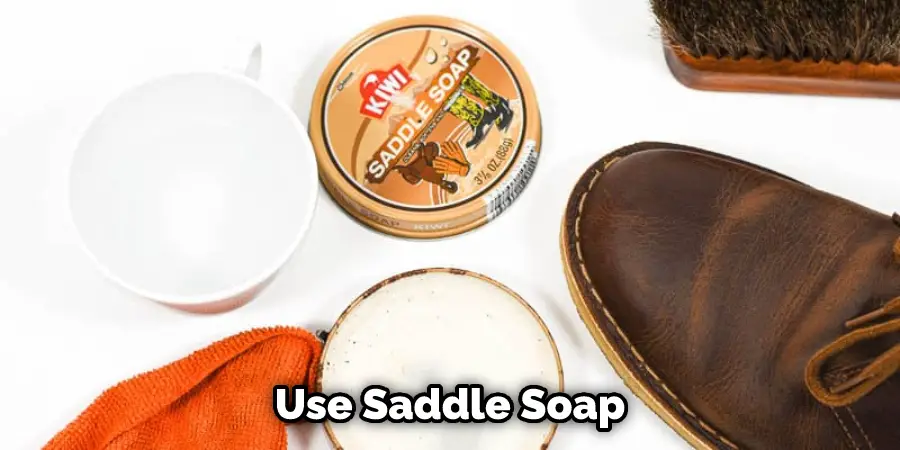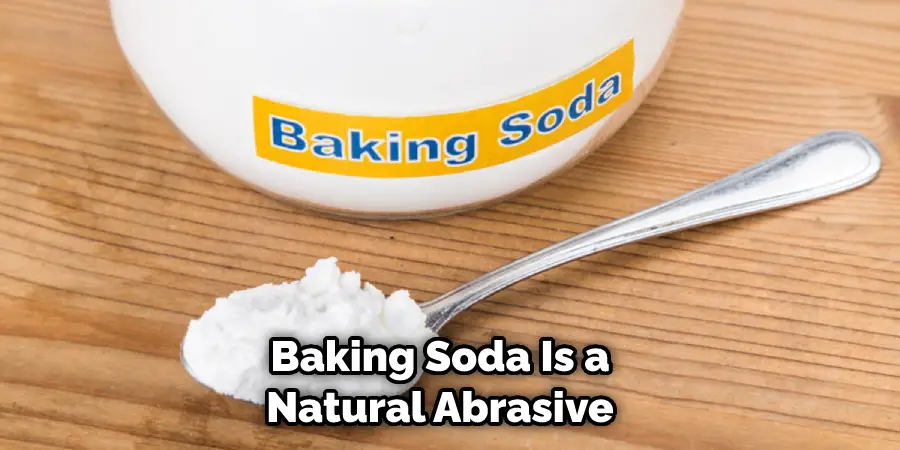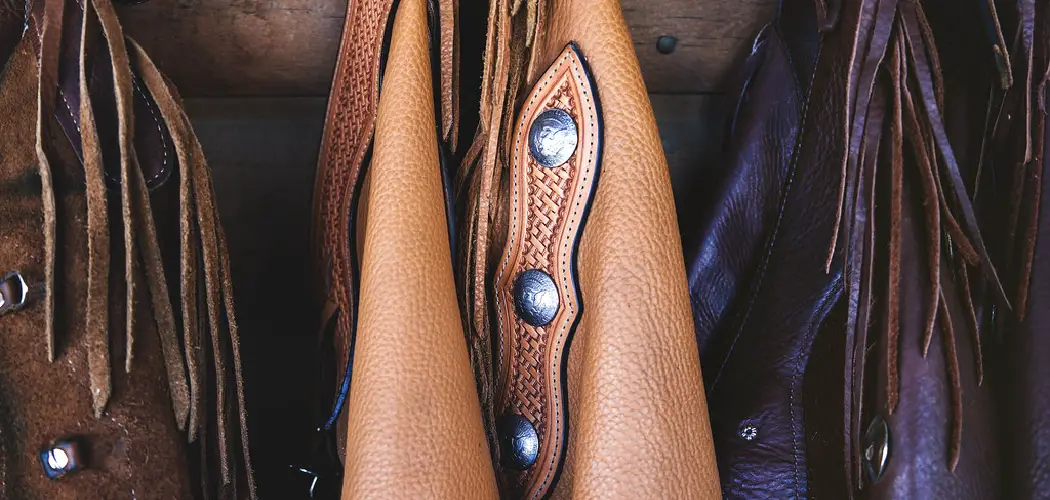If you’re a rider, then you know the importance of having a good set of leather chaps. Not only do they make you look cool, but they also provide vital protection in the event of a fall.

However, like all pieces of gear, chaps need to be properly cleaned and maintained to perform at their best. In this article, we’ll show you how to clean leather chaps using simple steps that anybody can follow. Let’s get started!
Summary: Begin by vacuuming the entire surface of the chaps to remove dirt and debris. Next, mix a gentle, non-abrasive soap with lukewarm water in a large bowl.
Use a soft cloth to apply the mixture, always stroking in the same direction. Once done, rinse off with clean lukewarm water and then dry with a towel or cloth. Condition the leather with an appropriate leather conditioner and buff it with a damp cloth.
What Causes Leather Chaps to get Dirty?
There are a few things that can cause leather chaps to get dirty. First, if you ride in dusty conditions, your chaps will get dirty from the dust that settles on them. Second, if you sweat while riding, your chaps will absorb some of that sweat, leading to staining and a less-than-pleasant odor. Additionally, if you take a spill while riding, your chaps will likely pick up some dirt and debris.
Another common cause of dirty chaps is simply not cleaning them regularly. The other thing that can cause leather chaps to get dirty is storing them improperly. If you store your chaps in a damp or humid environment, they are more likely to mildew or mold. Lastly, if you store your chaps in direct sunlight, they will fade, and the leather will dry out.
Why Cleaning your Chaps is Important
You might be thinking, “Why bother cleaning my chaps? They’re just going to get dirty again.” But there are a few reasons why cleaning your chaps is important. First, if you don’t clean your chaps, the dirt and sweat will build up over time and cause the leather to break down.
This will make your chaps more likely to tear or fall apart, which is obviously not what you want. Second, if you don’t clean your chaps, the dirt and sweat will also cause them to stink.
Nobody wants to be the rider with the smelly chaps! Third, if you don’t clean your chaps, the dirt and sweat will also cause the leather to become dry and brittle. This makes your chaps more susceptible to damage from the elements and makes them less comfortable to wear. Another reason to keep your chaps clean is that it just looks better.

Nobody wants to ride around in a pair of dirty, smelly chaps. Finally, cleaning your chaps is important because it’s a good way to inspect them for damage. Regularly cleaning your chaps can catch small tears or cracks before they become big problems.
Some effective Ways How to Clean Leather Chaps:
1. Use a Leather Cleaner
The first step in cleaning leather chaps is to use a leather cleaner. Leather cleaners are designed to clean leather without damaging it, and they can be found at most stores that sell leather goods. When choosing a leather cleaner, be sure to pick one that is designed for use on chaps.
Next, apply the cleaner to a clean cloth and wipe it over the surface of your chaps. Be sure to pay special attention to any particularly dirty areas. Once you’ve cleaned the chaps with the leather cleaner, wipe them down with a clean, damp cloth to remove any residue. If your chaps are particularly dirty, you may need to repeat this step.
2. Use Saddle Soap
Saddle soap is another option for cleaning leather chaps. Saddle soap is a traditional leather cleaning product that has been used for generations. It’s made from a combination of fats, oils, and soaps and is designed to clean leather without damaging it.

To use saddle soap, first wet a clean cloth with warm water. Next, apply the saddle soap to the wet cloth and rub it into the leather. Once you’ve applied the saddle soap, use a clean, damp cloth to wipe away any residue. Avoid using too much saddle soap, as it can make the leather feel stiff.
3. Use a Horsehair Brush
A horsehair brush is a great tool for cleaning leather chaps. The stiff bristles of the brush will loosen dirt and debris, making it easier to remove. First, brush the chaps with a dry horsehair brush to remove any surface dirt. Then, wet the bristles of the brush and continue brushing the chaps. The water will help to loosen any stubborn dirt and debris. Finally, rinse the chaps with clean water and dry them with a clean towel.
4. Use Distilled White Vinegar
Distilled white vinegar is another effective cleaning solution for leather chaps. Vinegar is a natural disinfectant that will help remove any bacteria or dirt on the surface of your chaps. Mix equal parts of vinegar and water in a bowl to clean with vinegar. Then, wipe down your chaps with the solution using a clean cloth. Rinse the chaps with clean water afterward to remove any residue. If your chaps are very dirty, you may need to repeat this process several times.
5. Use Baking Soda
Baking soda is another common household product that can be used to clean leather chaps. Baking soda is a natural abrasive that can help to remove dirt and grime from the leather. To use this method, first, make a paste by mixing equal parts water and baking soda. Next, apply the paste to a clean cloth and rub it into the leather in a circular motion.

Once the paste has been applied, let it sit for about 15 minutes before wiping it away with a damp cloth. This method best cleans small areas or removes specific stains from leather chaps. If your chaps are extremely dirty, you may want to consider using a different cleaning method.
6. Use Cream of Tartar
Cream of tartar is another common household product that can be used to clean leather chaps. This ingredient is often used in baking but can also be used as a cleaning agent. First, make a paste out of cream of tartar and water. Then, apply the paste to the chaps and rub it in using a soft cloth. Finally, wipe the chaps down with a damp cloth to remove the paste. You may need to repeat this process if you’re dealing with tough stains.
7. Use Petroleum Jelly
Petroleum jelly is another effective way to clean leather chaps. This product is often used as a moisturizer but can also be used to clean and protect the leather. Petroleum jelly will help to remove any dirt or grime that is on the chaps and will also condition the leather. Apply a small amount of petroleum jelly to a clean cloth and rub it into the chaps. Wipe off any excess with a second clean cloth. You can also use petroleum jelly to protect the chaps from water and stains.
8. Use Baby Wipes
Baby wipes are a quick and easy way to clean leather chaps. They’re also great for cleaning on the go. First, test the baby wipes on a small, inconspicuous area of the chaps to ensure they won’t damage the leather. Then, gently wipe the chaps down with the baby wipes. Be sure to go with the grain of the leather to avoid damaging it. Finally, use a clean, dry cloth to buff the chaps and restore their shine.
Also you Can Visit To How to Clean a Saddle Without Saddle Soap
The Importance of Cleaning Your Leather Chaps
Cleaning your leather chaps is an essential part of their maintenance. Leather chaps provide a comfortable barrier between you and the elements, but they won’t last long if you don’t take care of them. Fortunately, cleaning and caring for your leather chaps isn’t difficult — all it takes is some time, patience, and the right products.
To start with, be sure to wipe down your leather chaps after every use with a damp cloth to remove dirt and debris. Then, occasionally use a leather cleaner specifically formulated for your type of leather: oil-based tanned or vegetable-tanned leather. After cleaning your chaps, apply a light coat of conditioner or waterproofing to keep the fibers healthy and prevent cracking over time.
When you’re done cleaning, make sure to hang your chaps up in a cool and dry place away from direct sunlight or heat sources. Leather chaps are very prone to stretching when exposed to extreme temperatures or humidity, so avoid storing them in areas with high moisture levels. Additionally, try to regularly check straps and buckles for signs of wear and tear; replace these components as needed so you can continue enjoying safe rides for years to come!
Tips and Warnings on How to Clean Leather Chaps:
Tips:

- If you’re caught in the rain, and your leather chaps get wet, let them dry naturally. Please do not put them near a heat source to speed up the drying process, as this will damage the leather.
- If your leather chaps get muddy, wipe them down with a damp cloth as soon as possible. Allowing mud to dry on the leather will make it harder to remove and can damage the leather.
- If your chaps get salt stains from sweating, wipe them down with a damp cloth and let them air dry.
- Never put your leather chaps in the washing machine, as this will damage the leather.
- Always store your leather chaps in a cool, dry place.
Warnings:
- Do not use harsh chemicals or detergents on your leather chaps, as this will damage the leather.
- Do not put your leather chaps in the dryer, as this will damage the leather.
- Do not expose your leather chaps to direct sunlight for extended periods, as this will damage the leather.
- Do not allow your leather chaps to become excessively dirty or wet, as this will damage the leather. If they do become damaged, take them to a professional for repair.
- Never put your leather chaps in the freezer, as this will damage the leather.
Factors to Consider When Choosing a Cleaning Method:
Getting your home clean can be hard work, but there are ways to make it easier. Choosing the right cleaning method for your needs can mean less effort and more efficiency.
Here are some factors to consider when deciding which cleaning method is best for you:
- Time: How long will it take to finish the job? Some methods may be quicker than others, so this should be taken into consideration if you don’t have a lot of time to spare.
- Cost: Different cleaning methods require different equipment, chemicals, and supplies – all of which come with a price tag. Make sure to factor in the cost of supplies when choosing a cleaning method.
- Type of Cleaning: Different methods are better for different types of dirt and surfaces. For example, steam cleaning effectively removes bacteria from hard surfaces like countertops or tiled floors.
- Safety: Certain cleaners may contain harsh chemicals that could be harmful if not used correctly. Research different products and read safety warnings before using any cleaners on surfaces that come into contact with food or water.
- Environment: Consider how your choice of cleaning products and methods affects the environment around you – indoors and out. Choose eco-friendly options whenever possible to reduce pollution and landfill waste.
How Often Should You Clean Your Leather Chaps?
Leather chaps should be cleaned every few months or as needed. You may need to clean them more frequently if they’re exposed to mud, salt, sweat, or other harsh elements. Inspect your chaps regularly for any signs of wear and tear, and take care of them accordingly. With proper care, your leather chaps can last for years.
Frequently Asked Questions
Is It Ok to Clean Leather With Vinegar?
Yes, vinegar can be used to clean leather. It is important to note that you should only use vinegar as a last resort, as it can damage the leather. To clean leather with vinegar, first make a solution of 1 part vinegar to 10 parts water. Soak the leather in the solution for 30 minutes, then rinse it off.
Does Vaseline Soak Into Leather?
Vaseline does not soak into leather, but it can help to condition and protect the leather. Vaseline can also be used as a lubricant to make the process of cleaning and repairing leather easier.
Can You Dye Leather Chaps?
Yes, it is possible to dye leather chaps. There are a few different methods that can be used, depending on the desired color. The most common way to dye leather chaps is with an acid-base dyeing process, which involves combining an acid with a base to create a reaction that results in the color being absorbed into the leather. Other methods include using a solvent dye and a heat treatment to create a more permanent finish. Before dyeing leather chaps, it is important to test the color on a small sample first to make sure it is suitable for the final product.
What is the Best Leather for Chaps?
The best leather for chaps will vary depending on the specific needs of the wearer. Some factors that may influence the choice of leather for chaps include:
1. The type of riding or activity involved: For activities such as horseback riding or ranching, a tougher and more durable leather is often needed.
2. The weather conditions: Leather that is designed to withstand harsh weather conditions, such as rain and snow, may be preferable.
3. The wear and tear that the chaps are likely to experience: Chaps that are regularly worn in cold weather environments may require a tougher leather than those that are only occasionally used.
4. The size and shape of the chap: Chap sizes can vary greatly, so it is important to choose a leather that will be appropriate for the particular wearer.
Ultimately, the best leather for chaps will depend on the individual needs of the wearer and will vary depending on the type of riding or activity involved.
Final Thoughts
So there you have it! Everything you need to know about how to clean leather chaps. Follow the tips and warnings above to avoid damaging your chaps. With proper care, your chaps will last for years. Thanks for reading!

